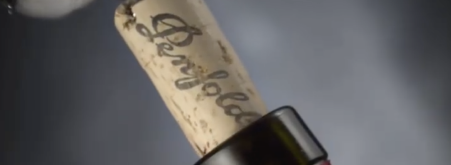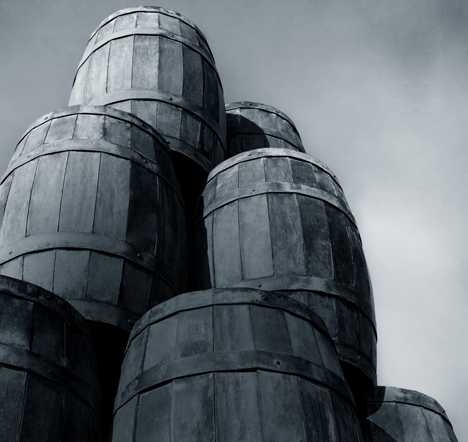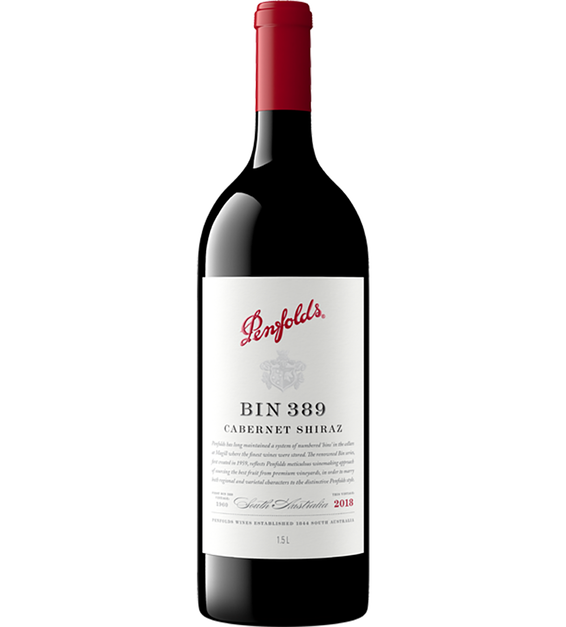一起开启您的传奇吧。
BIN 389 赤霞珠设拉子 2018年
The Penfolds Collection
BIN 389 赤霞珠设拉子 2018年
| 种类
Cabernet Sauvignon Shiraz
|
Cabernet Sauvignon Shiraz |
|---|---|
| 年份
2018
|
2018 |
| 容量
1.5 L
|
1.5 L |
| Closure
Cork
|
Cork |
| 最佳品鉴期
2023 - 2050
|
2023 - 2050 |
| 98 Points - Andrew Caillard MW |
| 97 Points - Nick Stock - James Suckling |
| 96 Points - Huon Hooke |
| 96 Points - Tony Love |
| 96 Points - Ken Gargett |
Andrew Caillard MW
"Deep crimson. Intense pure blackcurrant, blackberry aromas with dark chocolate notes. Generously proportioned wine with dense inky cassis, blackberry mulberry fruits, plentiful chocolaty tannins, mocha espresso oak complexity, attractive mid-palate viscosity and superb mineral length. Finishes grainy firm. A classic powerful Bin 389 year with superb fruit complexity, density and attack. Should last the distance. An Australian wine tradition that rarely disappoints. The 2018 highlights exceptional sourcing and the beautiful partnership between cabernet sauvignon and shiraz where the wine represents far more than the sum of its parts. A landmark wine of the 2020 collection offering collectors and drinkers the quintessential Penfolds experience."
Put simply, Bin 389 manifests all that is Penfolds… a wine that so many of us have grown with. This style extolls the wisdom of blending, as it does the synergies afforded by varietal and sourcing freedom.”
– Peter Gago, Penfolds Chief Winemaker

Bright, crimson red

Lifted, fragrant. Immediately Penfolds. Aficionados may quickly identify and proclaim 389.
Opulently: Trifle: layers of custard and port-wine dark jelly with flaked coconut and juniper/cassis. Cake: old-fashioned hummingbird cake, with coconut flakes and nutty flavours.
Overheard: “Petrichor aromas gradating to silkworm-eaten mulberry leaf”. Honestly!?! Familial youthful Bin 389 oak – subtle matchstick and a hint of vanilla powder. As they say – what is there not to like?!

Balance of the sweet (cabernet) and the savoury (shiraz). Possesses what has now often been referred to as a black forest cake 2018 vintage flavour profile.
Darker fruits – closer to that of a black cherry liqueur than a crème de cassis component of Kir.
Flavours of roasted beetroot – a venison sauce beetroot reduction … similar texturally to a congealed sweet fat (a custardy emulsion/film – not a grainy paste). Oak and tannins absorbed. Both are certainly present, yet not at all demanding their own space on this Bin 389 stage. Substantial, intense.
Vintage Conditions
Relatively dry conditions coupled with near long-term winter/spring temperatures indicated an early start to the growing season. However, a spell of cold weather in November slowed grapevine development. Warm and sunny weather prevailed throughout spring providing optimal conditions for flowering and fruit-set. Barossa Valley experienced 22 days of temperature greater than 35°C in summer, while McLaren Vale experienced 17 days greater than 35°C. Coonawarra, Robe and Wrattonbully also had a warm, dry growing season by regional standards. Late flowering and the delayed onset of veraison throughout the south-east slowed harvest by a few weeks. The warm, dry weather carried into autumn, setting up an Indian summer with favourable conditions for ripening grapes. A fine vintage for all Penfolds South Australian growing regions.
| GRAPE VARIETY
57% Cabernet Sauvignon, 43% Shiraz
|
57% Cabernet Sauvignon, 43% Shiraz |
|---|---|
| VINEYARD REGION
McLaren Vale, Barossa Valley, Padthaway, Coonawarra, Robe, Wrattonbully
|
McLaren Vale, Barossa Valley, Padthaway, Coonawarra, Robe, Wrattonbully |
| 葡萄酒分析
酒精浓度: 14.5%, pH: 3.59, Acidity: 7.1g/L
|
酒精浓度: 14.5%, pH: 3.59, Acidity: 7.1g/L |
| MATURATION
American oak hogsheads (38% new)
|
American oak hogsheads (38% new) |
The Bin 389 Story
Bin 389 is one of Australia’s great cellaring red wines. First produced in 1960, its history is connected with the development of Grange and Max Schubert’s ambition of creating a ‘dynasty of wines which all bear an unmistakable resemblance to each other’. Named after its original binning compartment at Magill cellars, Bin 389 is the most popular wine in the Australian secondary wine market because of its heritage, consistency and reputation.
Discover Collection
